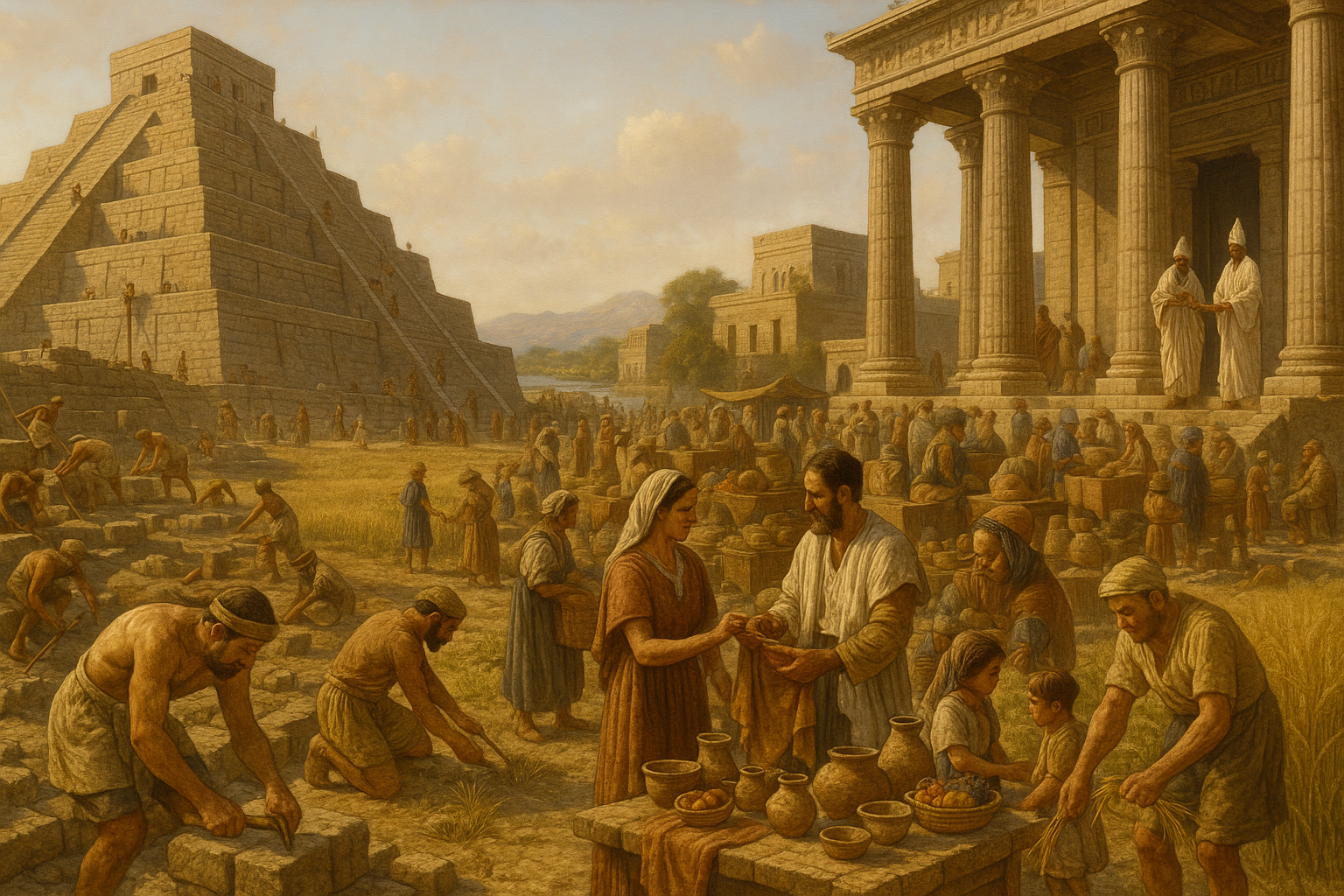In a world where technology often overshadows tradition, there lies a mystical practice that transcends time, drawing us back to our roots and inviting us to pause and reflect. 🌅 This practice, rich in history and imbued with profound meaning, unfolds in the simplicity of sand. Welcome to the enchanting realm of sacred sands, where symbols etched into grains carry stories that bridge the past and present, connecting us to cultures and rituals that have shaped humanity. In this article, “Sacred Sands: Uncovering the Mystical Meanings of Ritual Symbols in the Sand,” we will embark on a journey to explore the depth and beauty of these ancient practices and the symbols that inhabit them.
For centuries, communities across the globe have turned to the sand as a canvas for expression, spirituality, and communication. From the intricate sand mandalas of Tibetan monks to the ceremonial sand paintings of the Navajo people, each stroke and symbol holds a significance that transcends mere aesthetics. These ephemeral artworks are not just visually stunning; they serve as a conduit for spiritual connection, a meditation in motion, and a reminder of the impermanence of life. As we delve into the layers of meaning behind these symbols, we will uncover how they serve as tools for storytelling, healing, and transformation.
The first stop on our journey takes us to the Tibetan plateau, where monks meticulously craft mandalas using colored sand. This ancient practice is more than a meditative exercise; it is a spiritual ritual that embodies the universe’s transient nature. Each mandala is a microcosm of the cosmos, a sacred circle filled with intricate patterns that represent the divine harmony and balance of life. We’ll explore the symbolism behind these geometric designs, the meticulous process of their creation, and the profound lessons they impart about the nature of existence.
Next, we travel to the deserts of the American Southwest, home to the Navajo people, whose sand paintings play a vital role in their healing ceremonies. Known as “places where the gods come and go,” these sacred artworks are believed to summon deities and channel their healing powers to those in need. Each symbol and color in a Navajo sand painting carries specific meanings, creating a complex tapestry of cultural and spiritual significance. We will examine how these sand paintings function as a living language, bridging the human and the divine, and providing insight into the rich tapestry of Navajo cosmology and healing practices.
Finally, we’ll broaden our lens to consider contemporary artists and spiritual seekers who have embraced sand as a medium for exploration and expression. In our modern world, where digital communication often prevails, these artists find solace and inspiration in the tactile, transient nature of sand art. Through their works, we witness a revival of ancient practices, reimagined and adapted for today’s context. These contemporary creators challenge us to reconnect with the earth, encouraging mindfulness and introspection through the simple yet profound act of drawing in the sand. As we uncover the threads that connect past and present, tradition and innovation, we invite you to immerse yourself in the sacred sands and discover the timeless wisdom they hold. 🌍
The Significance of Ritual Symbols in Sand
Ritual symbols in sand, often seen in various cultures worldwide, possess a deep-rooted mystical significance. These symbols, crafted meticulously in sand, have been used throughout history to convey spiritual messages, invoke blessings, or serve as a focal point in ceremonial practices. Their transient nature adds to their mystique, highlighting the impermanence of life and the constant change inherent in the universe.
The creation of these symbols is more than just an artistic endeavor; it is a spiritual journey. Each line drawn in the sand represents a connection between the physical and the spiritual realms. These symbols are crafted in a variety of settings, from sacred sites in the desert to beaches where the waves gently erase the artwork, creating a beautiful metaphor for the transient nature of existence. The act of creating and then watching the symbols disappear reinforces the concept of letting go and the acceptance of life’s ephemeral quality.
In many traditions, the symbols drawn in the sand are considered sacred. They serve as a link to the divine, a way for practitioners to connect with forces beyond the physical world. These symbols can vary widely between cultures, each imbued with meanings and stories passed down through generations. Often, they are used in rituals designed to purify the spirit, bring good fortune, or protect against evil forces. This rich tapestry of meanings and uses underscores the universal human quest for understanding and transcendence.
Comparative Overview of Ritual Symbols Across Cultures
| Culture | Symbol Type | Purpose | Materials Used |
|---|---|---|---|
| Native American | Sand Paintings | Healing, Spiritual Guidance | Colored Sand, Crushed Minerals |
| Hindu | Kolam | Ritualistic Welcome, Auspiciousness | Rice Flour, Sand |
| Buddhist | Mandalas | Meditation, Impermanence | Colored Sand |
| Tibetan | Sand Mandalas | Healing, Blessing | Colored Sand |
As illustrated, the purposes of these symbols range from healing and meditation to inviting auspiciousness and spiritual guidance. The materials, though similar, are utilized in ways that reflect cultural priorities and values. For example, the use of crushed minerals in Native American sand paintings not only adds color but also incorporates the natural world into the spiritual realm, embodying a holistic worldview.
The Process of Creating Sand Symbols
Creating sand symbols is a process steeped in tradition and skill, often requiring years of practice to perfect. The methods used vary widely, but the underlying purpose remains consistent: to create a tangible representation of spiritual or cultural beliefs. The meticulous nature of this work demands focus and dedication, with each stroke in the sand carrying significant meaning.
In many traditions, the creation of these symbols begins with a period of meditation or prayer. This preparatory phase is crucial, as it allows the practitioner to enter a state of mindfulness necessary for the task. Once ready, the practitioner uses tools such as sticks, hands, or funnels to shape the sand into intricate patterns. Each stroke is deliberate, with every line, curve, and dot carrying its own significance.
- The environment plays a crucial role in the creation process. Outdoor settings, such as beaches or desert landscapes, offer a serene backdrop, allowing practitioners to connect with nature.
- Tools used in sand art vary, from simple sticks to elaborate templates, each serving a specific purpose in the symbol’s creation.
- The presence of an audience can alter the dynamic, transforming the creation into a communal experience, where spectators share in the spiritual journey.
Video: The Art of Tibetan Sand Mandalas
For a deeper understanding of how these symbols are created, watch this insightful video: The Mystical Art of Tibetan Sand Mandalas – YouTube.
Symbolism and Interpretation
The symbols drawn in sand carry a wealth of meanings, each line and curve steeped in cultural and spiritual significance. While some symbols are universal, others are unique to specific traditions, offering insight into the beliefs and values of the cultures that create them. Understanding these symbols requires not only a knowledge of the art form but also a deep appreciation for the spiritual and historical context from which they arise.
- Circle: Unity, wholeness, and the cycle of life.
- Spiral: Growth, evolution, and the journey of life.
- Triangle: Strength, harmony, and the connection between mind, body, and spirit.
- Square: Stability, balance, and the physical world.
These symbols, while simple in appearance, carry profound meanings that transcend cultural boundaries. They invite us to reflect on the deeper aspects of life, encouraging a holistic understanding of our place in the world.
The Impact of Sand Symbols in Modern Culture
While sand symbols have ancient origins, they continue to hold relevance in contemporary society. Their ephemeral nature and intricate designs have captured the imagination of artists, spiritual seekers, and cultural enthusiasts alike. In modern times, these symbols have been adapted and reinterpreted, finding new life in art installations, festivals, and spiritual practices around the globe.
In the realm of art, sand symbols have inspired a wide range of creative expressions. Contemporary artists have embraced the medium, using sand to create large-scale installations and performances that challenge the boundaries of traditional art forms. These works often explore themes of impermanence, environmentalism, and the intersection of nature and human creativity, offering fresh perspectives on the age-old practice.
In spiritual circles, sand symbols continue to serve as powerful tools for meditation and reflection. Their ability to convey complex spiritual concepts in a tangible form makes them invaluable in personal and communal practices. Whether used in private rituals or public ceremonies, these symbols offer a means of connecting with the divine and exploring the mysteries of existence.
Embracing Sand Symbols in Daily Life
The enduring appeal of sand symbols lies in their ability to resonate on a personal level. Here are some ways individuals can incorporate these symbols into their daily lives:
- Explore the creation of sand art as a form of meditation, focusing on the process rather than the end result.
- Use sand symbols as a tool for mindfulness, creating small designs during moments of reflection or prayer.
- Participate in workshops or community events that celebrate the art of sand symbols, connecting with others who share an interest in this practice.
Conclusion
In concluding our exploration of “Sacred Sands: Uncovering the Mystical Meanings of Ritual Symbols in the Sand,” we are reminded of the profound and intricate tapestry that ritual symbols in the sand weave across different cultures and epochs. This journey through the sands has unveiled layers of human expression, spirituality, and the shared desire to connect with something greater than ourselves.
Throughout the article, we delved into the historical roots of sand symbols, tracing their origins from ancient civilizations to contemporary practices. We observed how these symbols served as tools of communication, storytelling, and spiritual engagement. From the intricate mandalas of Tibetan monks to the ephemeral art of Navajo sand painters, each tradition revealed a unique aspect of how humanity finds meaning and solace in the natural elements.
One of the pivotal insights from our exploration is the universality of sand symbols as a medium for expressing the intangible. Despite geographical and cultural differences, these symbols speak a common language of spirituality and reflection. They remind us of the human quest for understanding our place in the universe, reflecting both the transience and beauty of life.
Moreover, we discussed the symbolism inherent in the materials themselves. Sand, often associated with impermanence, becomes a powerful metaphor for life’s fleeting moments. This ephemeral quality challenges us to appreciate the present and find beauty in the temporary. The act of creating and then destroying these symbols serves as a reminder of life’s cycles and the perpetual dance of creation and dissolution.
The article also highlighted the modern resurgence of sand symbols in various forms of artistic expression and spiritual practices. Today, artists and spiritual seekers alike find solace in the meditative process of crafting symbols in the sand, using this ancient practice as a means of grounding and self-discovery. The resurgence of interest in these symbols speaks to a broader societal yearning for connection, reflection, and mindfulness in a fast-paced world.
Understanding the mystical meanings of ritual symbols in the sand encourages us to embrace diversity and appreciate the rich tapestry of human culture. It invites us to listen to the stories and wisdom of ancient traditions, learning from their insights to navigate our own spiritual journeys. By recognizing the shared human experience embedded in these symbols, we foster a sense of unity and empathy that transcends cultural boundaries.
In light of this, we encourage you, the reader, to engage with this subject matter actively. Reflect on how the principles and insights shared in this article might apply to your own life. Consider the ways you can incorporate the meditative practices of sand symbolism into your personal routine, allowing yourself moments of introspection and creative expression. 🌿
Furthermore, we invite you to share your thoughts and experiences. Have you encountered sand symbols in your travels or spiritual practices? How have they impacted your understanding of the world or your place within it? Your insights could enrich the dialogue and inspire others to embark on their own journeys of discovery.
Finally, consider sharing this article with friends, family, or colleagues who might find value in its messages. By spreading awareness of the mystical meanings of sand symbols, we contribute to a broader cultural appreciation for these practices, fostering a deeper understanding of human spirituality.
As we part ways with the sacred sands, let us carry forward the wisdom and inspiration gleaned from these ancient symbols. May they serve as gentle reminders of the beauty in impermanence and the interconnectedness of all things. In the rhythm of life, as in the sands, may we find peace, purpose, and profound connection. 🌎
For further reading on the topics covered in this article, you might find these resources enlightening:
–
–
Thank you for joining us on this journey through the sacred sands. May your path be filled with discovery and wonder.

Toni Santos is a visual storyteller and experimental artisan whose work explores the strange frontiers where science meets art. Fascinated by the forgotten, the obscure, and the wonderfully absurd, Toni brings bizarre scientific experiments to life through provocative visual narratives and handcrafted creations that blur the line between curiosity and discovery.
His journey is rooted in a passion for the eccentric side of science — from electric shocks on cadavers to botany in hostile environments, from Victorian medical oddities to animal behavior gone rogue. Each project Toni undertakes sheds light on real (and sometimes questionable) scientific ventures that push the boundaries of human understanding.
With a background in visual design and hands-on craftsmanship, Toni blends artistic precision with conceptual boldness. His creations aren’t just decorative — they provoke, disturb, and invite the viewer to reconsider what counts as science, progress, or even sanity. Often inspired by true experiments — like galvanic resurrection, psychological endurance tests, or 19th-century pseudo-science rituals — Toni’s work reanimates these bizarre chapters of history with aesthetic intrigue and critical reflection.
As the creative force behind Vizovex, Toni invites you to explore a world where the strange becomes symbolic, the grotesque becomes beautiful, and every experiment tells a story worth unearthing.
His work pays tribute to:
The brilliant madness of forgotten experiments
The symbolic power of science at the edge of reason
The beauty in questioning what we think we know
Whether you’re a curious mind, a lover of scientific history, or simply drawn to the uncanny, Toni welcomes you to explore a realm where aesthetics and absurdity collide — one experiment, one mystery, one creation at a time.





